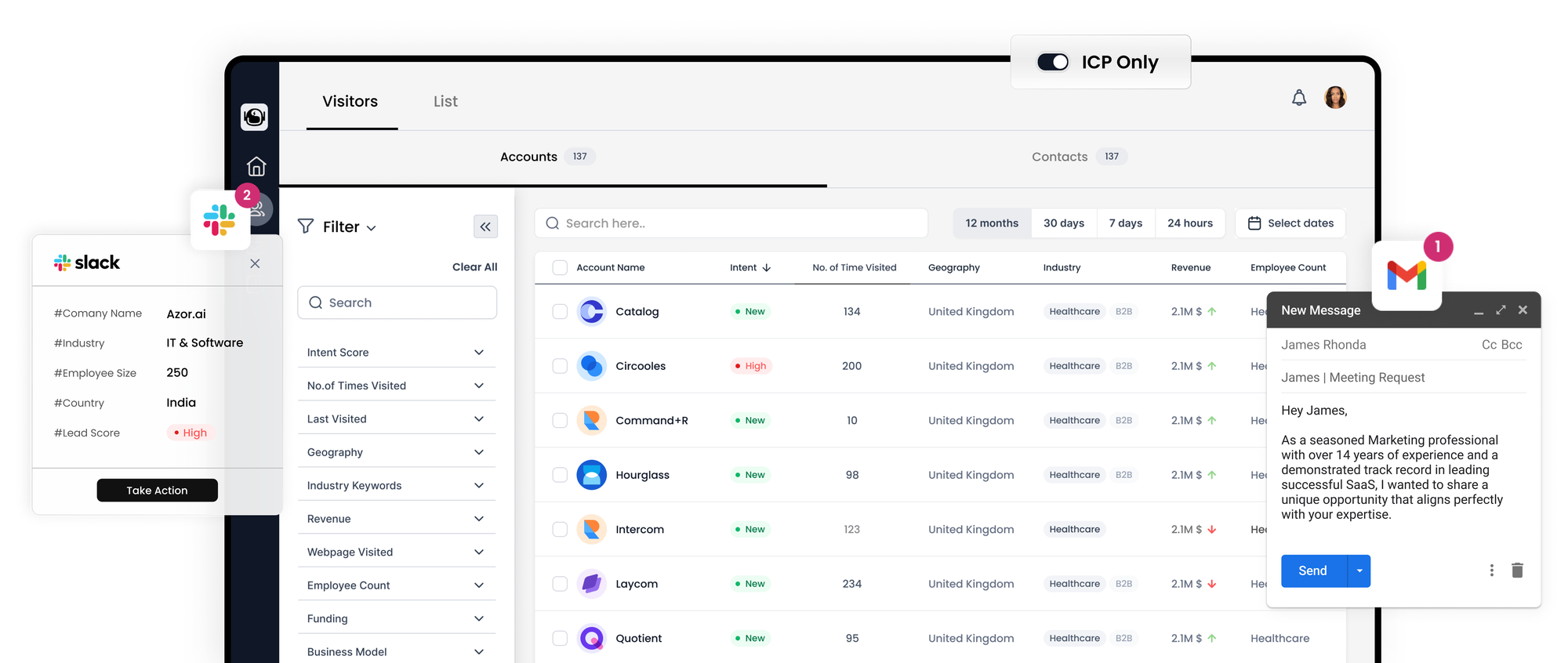Demystifying B2B Sales: Effective Tips and Strategies

Understanding B2B Sales
B2B sales, short for business to business sales, is the process of conducting business transactions directly between two businesses, as opposed to the more commonly known business to consumer (B2C) model, which involves selling products or services directly to individual consumers. In the realm of B2B sales, the focus is on catering to the needs of other businesses.
B2B sales have become ubiquitous across various industries, with a wide array of companies engaged in this model. Let's delve deeper into the intricacies of how B2B sales functions.

Types of B2B Sales
B2B sales encompass a broad spectrum of transactions, ranging from selling products to other businesses, supplying goods to manufacturers, to providing services from one business to another. Here are some illustrative examples:
1. Products for Business
Imagine the fictional Dunder Mifflin and Michael Scott Paper Company from the TV series "The Office." These fictitious companies represent B2B entities selling paper products directly to other businesses. They employ strategies like prospecting leads over the phone and sealing deals in person. Virtually every business requires essential office supplies, including computers, printers, and paper, to function effectively.
2. Products for Manufacturers
When considering products sold to manufacturers, envision a tire company supplying its tires to a major automobile manufacturer. In many cases, car manufacturers strike exclusive deals with tire brands to use their products exclusively in their latest vehicle models. While the automotive industry is just one example, numerous other manufacturers engage in B2B sales for various components and materials.
3. Business Services
Business services encompass the provision of services by companies to other businesses. For instance, a consultancy firm might be enlisted to assist with a project at a corporation, or a freelance designer may be hired to create digital designs for a company.
The B2B Sales Process
The B2B sales process exhibits variability depending on the industry and the specific buyer involved. Therefore, it is often more meaningful to examine the customer buying cycle, with a strong emphasis on prioritizing the customer's needs over the product itself. Let's explore each step in detail.
The Customer Buying Cycle
1. Awareness
At this initial stage, potential customers become aware of a problem that requires a solution, prompting them to initiate a search for potential solutions.
2. Consideration
During this phase, customers actively weigh their options. It is crucial to provide informative content that explains how your product or service can effectively address their problem.
3. Intent
Decision-makers evaluate the various alternatives, scrutinizing each option for logical, emotional, and financial viability. Your sales team must employ persuasive tactics to convince prospects of the value of your offering.
4. Purchase
The customer reaches a decision and proceeds to make the purchase. However, it is vital to recognize that the sales process does not conclude at this stage. Cultivating an ongoing relationship with the customer is essential.
5. Repurchase/Renewal
This phase represents an opportunity for substantial revenue growth. If your product consistently demonstrates value and remains integral to the customer's business, they are likely to continue their association with your company. This is where businesses often uncover significant opportunities for revenue enhancement.
Effective B2B Sales Strategies: Navigating the Customer-Centric Approach
In the realm of B2B SaaS sales, a significant transformation has occurred as businesses have shifted towards a more customer-centric approach. With the increasing accessibility of product and service information to B2B buyers, there has been a notable shift in trust dynamics. B2B buyers are increasingly reliant on online information and product reviews, diminishing their reliance on B2B salespeople.
Rather than being solely focused on lead generation and closing deals, B2B sales representatives must now prioritize the establishment of trust with their customers.
A successful B2B sales strategy should be centered around understanding and addressing your customer's unique needs. The pivotal elements in this endeavor are your value proposition and a meticulously crafted B2B marketing strategy. Neglecting these aspects could potentially lead to customer churn.
1. Uncover the "Why":
It is imperative to gain a profound understanding of your customer's motivations and align your product's value with their specific requirements. A one-size-fits-all approach to pitching your product is no longer effective. To achieve this, conduct comprehensive research on your customers, administer surveys, and actively seek feedback from both existing and prospective customers as you nurture your relationship with them. Your aim should be to present your product as the solution to a problem your customers genuinely care about.
2. Hone Your Value Proposition:
Emphasize your strengths and differentiators that set your offering apart from competitors. Motivate potential customers to delve deeper into what you have to offer. Your value proposition should be concise yet comprehensive, addressing specific pain points for the customer. Whenever possible, quantify the value your product brings by providing tangible ROI metrics. Consistently reinforce these values to keep the customer engaged.
3. Cultivate Meaningful Relationships:
In the realm of subscriptions, relationships are paramount. Customers are not making a one-time purchase but are committing to ongoing expenditures on your product or service. Building trust with customers is essential not only for the initial sale but also for retention and renewal. Building trust begins with establishing rapport, asking pertinent questions, and genuinely listening to customer feedback. Leveraging platforms such as LinkedIn for business-centric social engagement can be highly effective. Maintaining regular follow-ups and ongoing engagement demonstrates your sincere care for the customer.
4. Harness the Power of Social Proof:
Even in the digital age, word of mouth remains a potent force that can significantly impact your organization. Social proof can serve as a decisive factor between your sales team and their next successful deal. Prospective customers seek assurance that your solution has delivered results for other organizations and are interested in understanding the sales and customer success process. Leverage case studies, testimonials, and third-party review platforms to establish trust and credibility in the eyes of potential customers.
B2B vs. B2C: Key Differences to Consider
Imagine you're an apple farmer overseeing a vast orchard. You're confronted with a crucial decision regarding your business model. You can either take your apple produce to the local farmers' market, where you'll likely sell small quantities of apples to a revolving door of individual customers, or you can establish partnerships with large retail outlets like supermarkets.
Opting for supermarket sales ensures a consistent purchase of substantial apple quantities, but it also entails providing a stable supply at a fixed cost, managing deliveries, addressing higher demand, hiring staff, and managing various other expenses associated with running a B2B (business-to-business) venture.
Selling your apples directly at your local farmers' market represents a simplified form of the B2C (business-to-consumer) model. Here, you're taking the apples you've cultivated and selling them directly to members of your community. However, when you choose to sell your apples to large corporations, you're not only engaging in B2B transactions but also potentially taking on increased operational costs.
Now, let's delve deeper into the distinctions between B2B and B2C sales:
Price Point
B2B sales typically involve higher price points. This is intrinsic to the B2B landscape. When selling a critical software solution like HubSpot to another business, you're offering a tool that will serve as their primary CRM and marketing platform. Depending on factors like the number of users or data storage capacity, HubSpot charges a premium for its service and platform. The buying business is acquiring a solution to solve a specific problem, and they are willing to pay for it. Your pricing should reflect the value you provide, so it's important not to undervalue your offering. Continuously analyzing and understanding customer preferences is crucial for price optimization, and it's an ongoing process.
In contrast, B2C sales tend to be transactional and often involve lower price points that individual consumers can readily afford. While significant purchases like cars or houses may have higher price tags, most B2C transactions occur between an organization and an individual with decision-making authority.
Sales Cycle
The B2B sales cycle is typically longer and incorporates multiple touchpoints. It necessitates consideration of numerous stakeholders throughout each stage. As previously mentioned, B2C sales tend to be more transactional and often involve a single decision-maker. When making a purchase on behalf of an entire organization, not only must those with purchasing authority be involved, but also those who will use the product or service.
Strategy
B2C sales often involve a considerable emotional component. Think of small businesses selling their product for the first time or an individual purchasing a car. These transactions carry a significant emotional weight because they are largely driven by emotion.
On the other hand, B2B sales tend to be more methodical and rational. There is a well-defined strategy in place to ensure the sale progresses smoothly. Furthermore, the presence of multiple stakeholders on both sides contributes to a structured buying process.
Customer Base
In B2B sales, the focus is entirely on selling to business entities rather than individual consumers. Identifying the appropriate buyer personas and effectively marketing to them are pivotal in B2B sales. You are providing a solution to an entire organization, not just a single consumer.
Conclusion
B2B sales often entail higher price points and longer sales funnels. Understanding your customer personas, their motivations, and the problems they aim to solve is crucial for successfully selling your product from one business to another. Additionally, recognizing your value proposition and quantifying it with metrics can provide a clearer picture for your customers.
